Interviews
Interviews
-
“It’s Easy to Get Tunnel Vision on a Project Without Seeking Out Other Forms of Art”: Editor Catrin Hedström on Sharp Stick

Sharp Stick, Lena Dunham’s return to feature filmmaking after 12 years, is an intimate, character-driven film focusing on Sarah Jo, a naïve, woman in her mid-twenties embarking on an affair with the father of the child for whom she is a caretaker. The film touches on ideas of self-image and sex positivity, but remains close to its protagonist. Editor Catrin Hedström discusses keeping that focus by cutting scenes down to the essentials and how she brought out the complexity of the script’s characters. Filmmaker: How and why did you wind up being the editor of your film? What were the […]
-
“You Have to Find a Balance Between the Eroticism and the Reality”: Ashley Connor on Sharp Stick


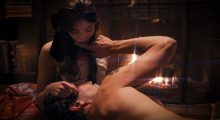
For Sharp Stick, her first feature film since 2010’s Tiny Furniture, Lena Dunham relates the adventure of Sarah Jo, a 26-year-old virgin, as she woos the father of Zach, an intellectually disabled child for whom she cares. As the film unfolds, ideas about trauma, sex positivity and body image begin to emerge. Cinematographer Ashley Connor discusses shooting the film on an accelerated timeline and how she captured the feeling of infatuation in the visuals. Filmmaker: How and why did you wind up being the cinematographer of your film? What were the factors and attributes that led to your being hired […]
-
“I Think a Lot of People Are Going to Able to Find Parallels to Their Own Love Stories”: Editor Robert Martinez on Lucy and Desi

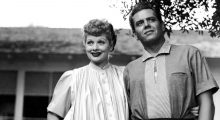
Lucille Ball and Desi Arnaz are one of the most beloved couples in showbiz history, and for many, it isn’t clear where the real people end and the Ricardos of I Love Lucy begin. Amy Poehler illuminates how those boundaries manifested and moved in Lucy and Desi, her documentary on the two stars. Below, editor Robert Martinez explains why he fought the urge to include extended I Love Lucy clips and kept the focus on the love story. Filmmaker: How and why did you wind up being the editor of your film? What were the factors and attributes that led to […]
-
“Capturing the Scale of the Amazon Rainforest Is an Impossible Task”: DP Alex Pritz on The Territory

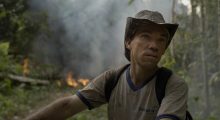
The Territory takes viewers deep inside the Brazilian Amazon, allowing them to bear witness to the ongoing conflict that has pitted Indigenous inhabitants against settlers looking to capitalize on the land. The film captures a pair of young leaders and their mentor, who defend the land with their lives, as well as settlers hoping to establish their own homestead, including those who engage in clear-cutting on their own. Director-cinematographer Alex Pritz explains how the film’s visual style distinguishes the different perspectives, his collaboration with an Indigenous cinematographer, and how his crew unexpectedly found themselves recording a settler burning down the […]
-
“My Hope Is That These Amazonian Voices Are Heard”: Editor Carlos Rojas Felice on The Territory

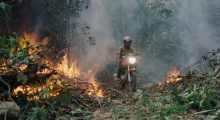
The Territory, which highlights ongoing conflicts in the Amazon between its Indigenous inhabitants and Brazilian politicians and businessmen, was co-produced by the Uru-Eu-Wau-Wau community. The film thus grants first-hand views of the conflict, from the frequent invasions to the Indigenous peoples’ establishing of their own media team to broadcast their side of the story. Editor Carlos Rojas Felice explains how he retained the film’s environmentalist themes while highlighting the opposing views of the various players. Filmmaker: How and why did you wind up being the editor of your film? What were the factors and attributes that led to your being […]
-
“It’s Always About Time and Not Having It”: DP Greta Zozula on Summering



With Summering, James Ponsoldt wanted to make a film that his young daughter would appreciate, and the result is a coming-of-age story about four girls planning one final weekend of fun before middle school. They unexpectedly make a discovery in the nearby woods that they keep to themselves, and from there imagination and reality collide in magical realist fashion. Below, cinematographer Greta Zozula explains how she managed the narrative’s tension between magic and realism and how the crew managed to make difficult scenes work with limited time. Filmmaker: How and why did you wind up being the cinematographer of your film? […]
-
“The Movie We Made Is Really Very Close to the Movie I Imagined”: Editor Darrin Navarro on Summering



Summering is James Ponsoldt’s ode to childhood in which four girls who discover something in the woods and make a questionable decision to keep it a secret and solve the mystery on their own. The coming-of-age story also has elements of both horror and magical realism, and keeping close to the perspective of its characters while staying tethered to the reality was crucial for the film. Editor Darrin Navarro discusses striking that balance and how altering the structure of the film gave the audience a way into the narrative. Filmmaker: How and why did you wind up being the editor […]
-
“I Wanted to Restrict Lighting That Didn’t Feel Naturally Motivated”: DP Barton Cortright on The Cathedral


With The Cathedral, an unseen narrator relates the life of Jesse Damrosh, beginning with the dissolution of his parents’ marriage and highlighting other hallmarks of middle-class American existence. D’Ambrose lingers not on the big life events, however, but the more quotidian and quieter moments and objects that leave indelible marks on one’s memory. Cinematographer Barton Cortright explains why natural light was the correct approach for the film, and how he amplified the natural look to avoid a shallow depth of field. Filmmaker: How and why did you wind up being the cinematographer of your film? What were the factors and attributes […]
-
“The Challenges We Had Were All Related to Nature”: DP Barbara Alvarez on Utama

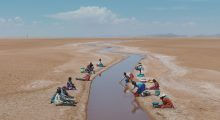
In Alejandro Loayza Grisi’s Utama, an ailing man tries to persuade his elderly Quechuan grandparents weathering a drought on the Bolivian Altiplano to move away from their lifelong home and join him in the city. Shot on location, the film portrays the daily routines and relaxed pace of life as well as the climate threat residents of the Bolivian highlands face. Below, cinematographer Barbara Alvarez recounts how the climate created difficulties in production and how she captured the tension between the harshness and the beauty of the location. Filmmaker: How and why did you wind up being the cinematographer of […]
-
“The Silences, the Looks, Are What Mark the Emotional Rhythm”: Editor Fernando Epstein on Utama

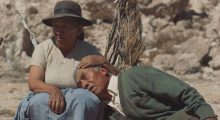
Utama, the feature debut by Alejandro Loayza Grisi, concerns an elderly Quechua couple urged by their grandson to move to the city while their native land is ravaged by drought. The pace of life and the experience of time are major themes in the film, and editor Fernando Epstein discusses how this necessitated creative ways of depicting routine and delaying the introduction of a major character. Filmmaker: How and why did you wind up being the editor of your film? What were the factors and attributes that led to your being hired for this job? Epstein: I am Uruguayan, and […]
